Cyclists may not fully understand what’s happening to them when they start slowing down. It’s often a result of cycling limiters. Maladies such as bonking, fatigue, and cramping have similarities, but in actuality are very different. Cycling limiters can be scientific, but cyclist’s have common terminology for that feeling when you just hit the wall. In no specific order they are bonking, fatigue and cramping. It might be helpful to break them down and know what each of them are.
Bonking vs. Fatigue vs. Cramping
Three markers for cycling limiters include bonk, fatigue, and cramping. The terms are often applied interchangeably, which sometimes makes it difficult to address the specific problem. Mistakenly trying to address one won’t help with the other, leading to repeated issues with cycling limitations.
Bonking
The term “bonk”, also referred to as “hitting the wall“, is often applied at the end of a race, long distance ride, or steep hill climb. Bonking is not plain old fatigue and cramping is different than fatigue.
The Why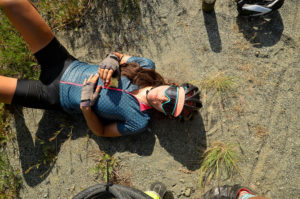
You bonk when you have exhausted your glycogen stores. This happens when you haven’t ingested enough carbs to produce more blood glucose for the intensity of riding and duration you are doing.
The Symptoms
Symptoms of bonking vary from cyclist to cyclist. Most often, a cyclist will experience a significant loss of performance that may include the inability to continue. You will gradually start to feel more and more tired and start to loose motivation. As you keep riding, you will start to become a bit lethargic as your brain isn’t getting enough glucose to continue functioning normally. As the bonk continues, you will be so tired that you have trouble holding yourself up on the bike. Bonking commonly occurs on longer more sustained rides, particularly when a high level of effort is required such as climbing.
The Brain Bonk
Bonking can be deadly for cyclists because muscles aren’t the only things in your body that burn glucose for fuel, your brain burns glucose too. That means that not having enough glucose in your blood to fuel the system has mental and emotional affects in addition to physical affects. Symptoms might also include nausea, blurred vision, confusion, headaches, poor coordination, shaking, and light-headedness.
If blood glucose levels drop too low, the body acts to protect the brain and begins to shut down the muscles first. However, the muscles won’t completely shut down before the brain begins to be affected. The mental and emotional consequences of bonking can be more dangerous to the cyclist than the physical consequences. The worst bonks may even induce hallucinations, like you’ve consumed bad mushrooms.
Fatigue
Fatigue is the fist indicator of performance issues on a long or demanding ride. We already know that bonking is caused by the depletion of the body’s glucose and glycogen stores. When your body’s glycogen stores get low during a race, long ride, or hill climb — your brain, which also relies on glucose, begins to get involved.
Brain Signals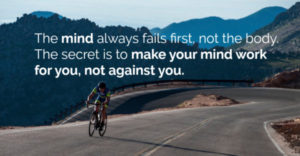
Fatigue is different from the actual physical condition of bonking. Fatigue is your brain sending signals that you’re tired so you stop doing what you’re doing to ensure that you survive. It’s the cycling limiter or braking mechanism in the brain that swings into effect that slows you down. It’s a tiredness that originates in the brain and nervous system.
Cramping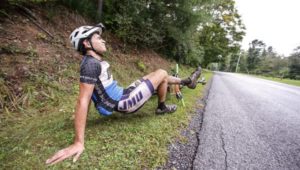
Of all the cycling limiters, cramps are probably the single biggest issue that stops you dead in your tracks. Cramping is not so difficult to understand. Most cyclists have been brought down by the burning, searing wrath of the cramp. But even though cramping is different, it’s sometimes grouped with bonking and plain old fatigue, or the result of the two. Using the terms “bonk” and “cramp” to describe the feeling of fatigue — or vice versa — is missing the point, and might be counterproductive to a solution.
The Mystery
The science behind cramping is problematic because it’s difficult to pinpoint a consistent cause-and-effect mechanism directly related to cramping. The most popular theories include fluid loss, electrolyte imbalance, core temperature changes, or a combination of all three, each contributing to varying degrees depending on the conditions and how hard you’re pushing yourself.
Fatigue to Cramping
At least one study suggests that cramps can be the result of bonking or fatigue: “Muscle cramping remains localized to the overloaded and fatigued muscle group sometimes spreading slowly across the involved muscle region, but not jumping or wandering around a muscle.” The study says.
Fatigue to Bonk
Fatigue comes first and the timeline progresses. If your brain doesn’t have the energy it needs to function properly, it goes into self-preservation mode. It doesn’t care about continuing your race. It doesn’t care about completing the next 50 miles or whatever goals you started with. It only cares about survival, and you feel fatigue. If you keep pushing through the fatigue, and continue to deplete your body’s energy source, the body will shut itself down and you’ve suffered a bonk. It’s no longer a case of fatigue or mind over matter. It’s no longer an issue of being tough enough to continue and you may or may not begin to get cramps. Your thinking becomes confused. You can become disoriented. You are in trouble.
Listen to Your Body
As noted earlier, cramps are mysterious and can happen pretty much at any point even though they are more likely to occur after fatigue sets in and/or bonking has been initiated in the body. The whole point of this is basic; take care of your body, give it what it needs in the way of nutrition, hydration, and don’t abuse it. Don’t try to analyze it too much. The body knows. Just listen to it.
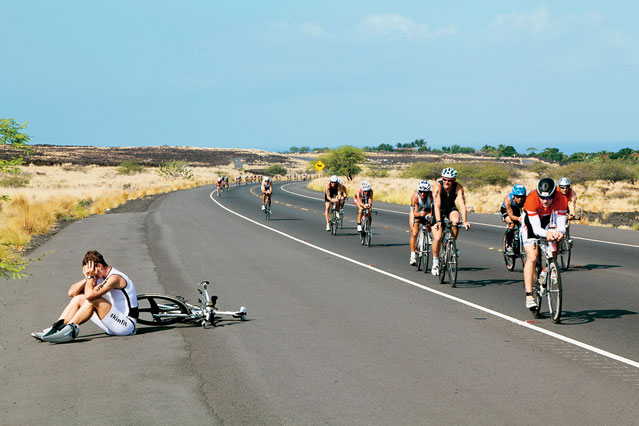
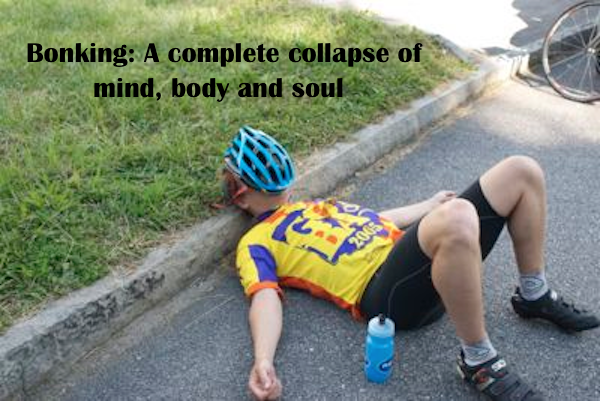 Bonking is one of the worst feelings you can have on two wheels. If you have ever bonked on a ride you will know what I am talking about, a complete collapse of your mind, body and soul. One minute you are smiling, flying along and the next minute you can barely stop the drool from coming out of your mouth, never mind trying to turn over the pedal crank!
Bonking is one of the worst feelings you can have on two wheels. If you have ever bonked on a ride you will know what I am talking about, a complete collapse of your mind, body and soul. One minute you are smiling, flying along and the next minute you can barely stop the drool from coming out of your mouth, never mind trying to turn over the pedal crank!